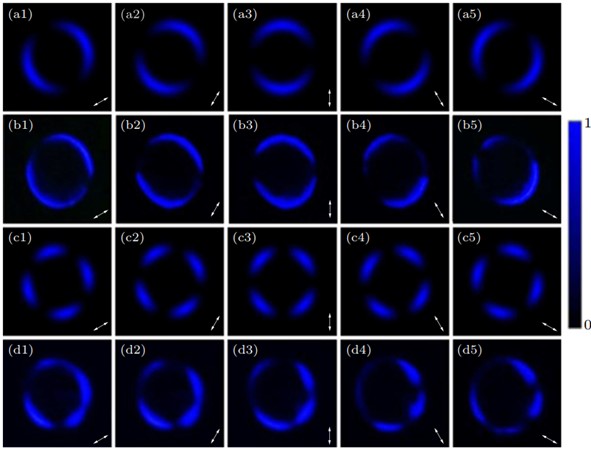
Time:2022-03-04 Read:4110
Polarization, as a salient feature of light beams, is of great importance in influencing the interaction of light and matter. Homogeneously polarized beams, such as linearly polarized beams, circularly polarized beams, and elliptically polarized beams, have been widely studied in various fields. Beams with space-variant polarization distributions, known as vector beams, have elicited widespread interest because of their many specific features, such as strong nonvanishing longitudinal field under diffraction limit, optical chain, and optical cages when tightly focused. As a new type of vector beam, perfect vector (PV) beams have been proposed and investigated over the last decade, and they have been characterized as having radii that are independent of topological charges. Researchers have also experimentally demonstrated the generation of individual and arrays of PV beams with stable intensity profiles and polarization distributions at certain propagation distances on the basis of geometric phase and liquid crystal devices. Unfortunately, the spectral limitations of these devices and techniques restrict the generation of PV beams in the ultraviolet wavelength range, which would further expand the applications of microscopy and spectroscopy down to the nanometer scale.
In the present study, we theoretically and experimentally demonstrate the generation of PV beams in ultraviolet wavebands. The generation process is driven by an infrared Bessel vortex beam and a green Gaussian beam that is generated through second harmonic generation. In the experiment, the ultraviolet PV beams with topological charges l = 1, 2, 3 are generated. The vectorial properties of the generated PV beams are also measured, as shown in Fig. 1. The results show that the radii of the generated ultraviolet PV beams remain invariant and are independent of the topological charges. We also measure the power variation trend of the generated ultraviolet PV beams with the increase of the topological charges. We expect that the proposed method provides a simple way to generate PV beams in deep ultraviolet wavebands and shows potential applications to optical manipulation.

Fig. 1. (a1)–(a5) and (c1)–(c5) respectively represent the simulated intensity profiles of the ultraviolet PV beams with topological charges l = 1, 2 when the GT prism has different polarization angles (30˚, 60˚, 90˚, 120˚, 150˚) with respect to the horizontal direction. The corresponding experimental results are shown in (b1)–(b5) and (d1)–(d5). The arrows in the lower right corner of the figures show the polarization angles of the GT prism with respect to the horizontal direction.
This research was published in " Hui Li, Haigang Liu, Yangfeifei Yang, Ruifeng Lu and Xianfeng Chen. Nonlinear Generation of Perfect Vector Beams in Ultraviolet Wavebands. Chinese Physics Letters 39, 034201 (2022)”.
Link: http://cpl.iphy.ac.cn/10.1088/0256-307X/39/3/034201